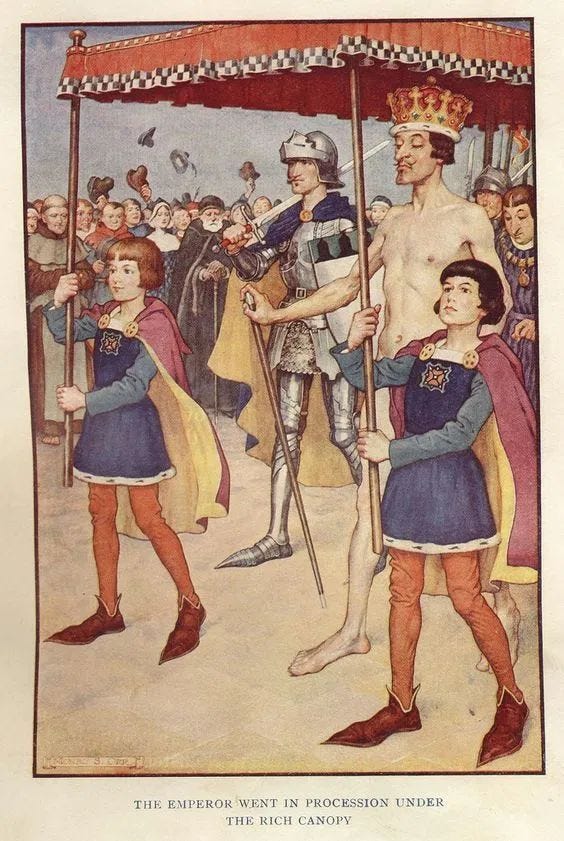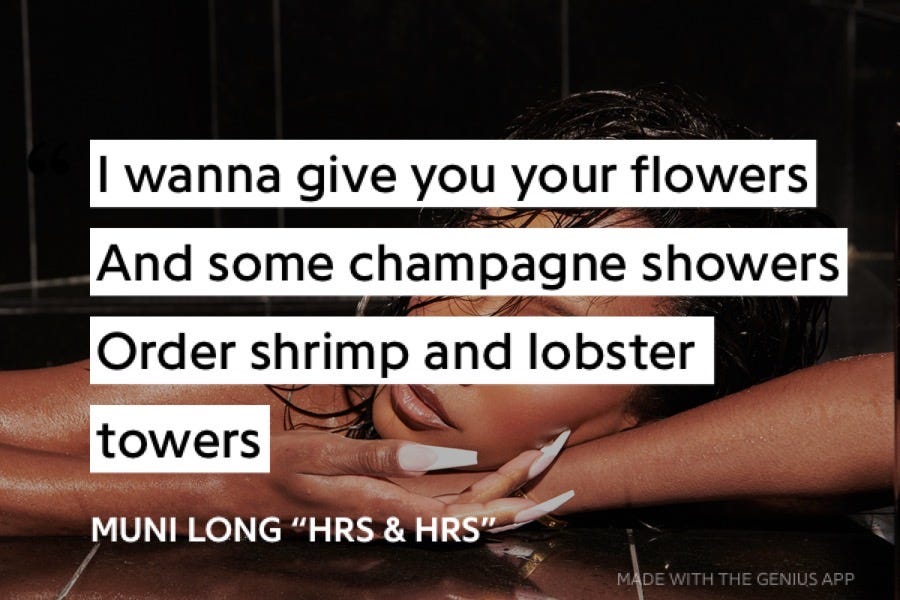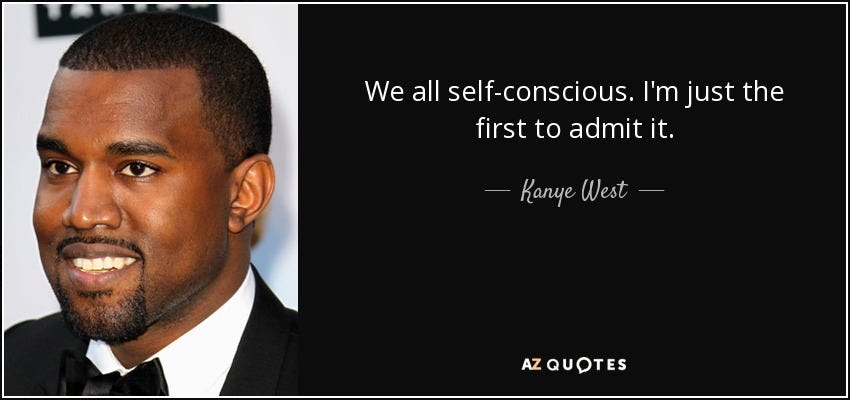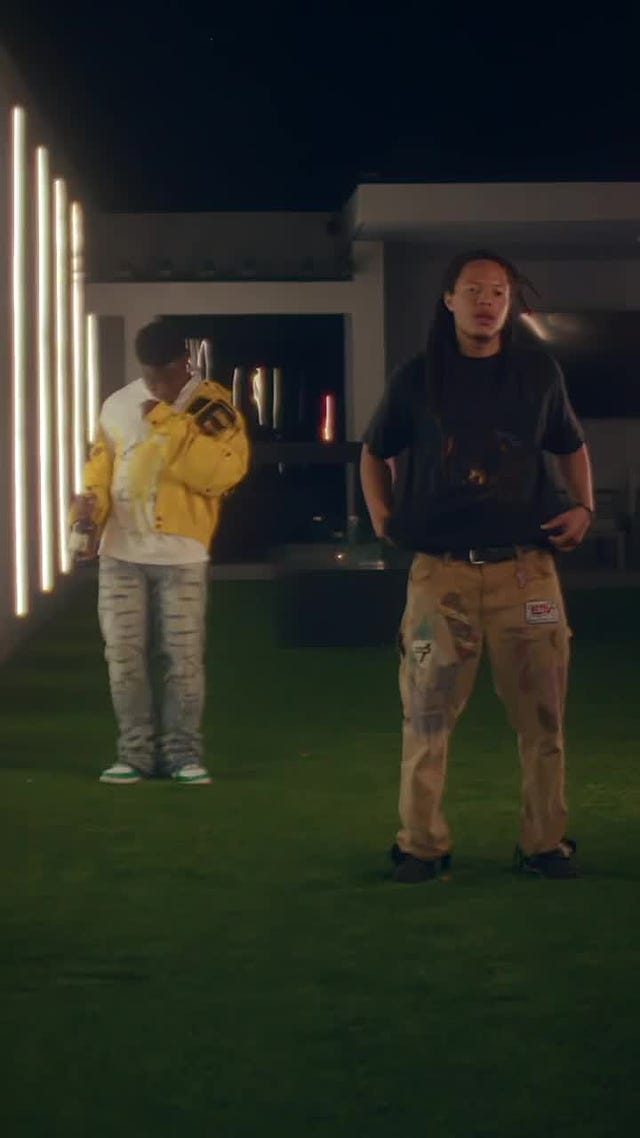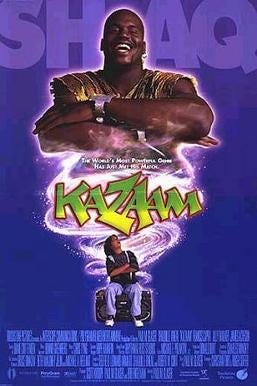This past week, I had a few music client teammate things happen (I don’t have clients, I have teammates). Darkovibes, one of the leading artists out of Ghana released an album entitled BUTiFLY, which features leading afrobeats artists like Davido, Wizkid, and Oxlade.
I also hit a studio session with John G, who has produced for artists like Doja Cat, Larry June, and Dej Loaf. While at the studio, I had a conversation with an artist about beef.
No, not the kind “where you need two gats to go to sleep”.
Beef like steak.
And how it apparently takes up to 72 hours to digest, as well as the benefits of a pescatarian lifestyle. Not the kind of conversation you would expect at a recording session, right?
You’d be surprised.
Anyway, during that conversation, we started talking about lobster. You can look this up yourself, but as the story goes, lobster used to be known as “the poor man’s protein”. This was in 17 and 1800 America. Because of how prevalent lobster was, and also because of its classification as “the cockroach of the sea”, it was specifically served to prisoners, slaves, and servants. Over time, however, people set up shops, and restaurants and rebranded lobster as a delicacy, and here we are today.
It’s made me think about the concept of rebranding: how something can be viewed as less than in one capacity, and in another, it can be viewed as a luxury. It’s similar to soul food which came out of undesired food given to enslaved people, and now, according to some statistics, the average southern soul food restaurant brings in $500k to $2m a year. Another example is the concept of “diamonds being a girl’s best friend” and symbolizing a man’s love for a woman while being a standard feature of a marriage proposal - all of which is largely the product of marketing propaganda which was designed to increase the value of diamonds and the profits of colonial diamond mine owners in Africa.
Good luck explaining that to your girlfriend.
Life is funny, though. It’s interesting how framing can influence our decision-making and what we find valuable. Some cultures call this kind of mental manipulation witchcraft. Some call it gaslighting, while others call it marketing, advertising, and branding.
In the case of ‘The Emperor’s New Clothes’, two men sold the king expensive, but invisible, clothes because they told him that the clothes were so unique, only special people could see it, and they were invisible to those who were stupid or incompetent. Of course, the King bought the clothes, and, of course, none of his subjects said anything because they wanted to feel special. Only a little child finally spoke up and said the emperor has no clothes!
That’s life in a nutshell.
Have you ever seen someone wearing something objectively ugly, but they’ve been told that “it’s fashion”; and the people around them don’t want to say anything because hey, if I can’t tell that it’s fashion, what does that say about me?
That’s just one example.
Me? When it comes to these sorts of things, marketing, branding; etc. I think it’s about intent, belief; and why you believe what you believe. Everything isn’t for everyone; but why do you do what you do and buy what you buy? Is it because of vanity and to fill your insecurities or is it out of a genuine love and appreciation for that thing or a sincere effort to produce and bring value into the world?
Wake up Mr. West!
But when we talk about “branding” today, the way it’s meant today comes from a 15th century word which meant a "mark made by a hot iron" to “identify the maker or quality” of a specific good. The brand on cattle or a box of goods told you who made it, it signified the quality associated with its’ owner or creator.
Think about the scene from ‘American Gangster’ where Frank Lucas gets upset at Nicky Barnes for bootlegging his “blue magic” heroine packages. Frank wasn’t upset that Nicky was also selling heroin, he was upset that Nicky was selling heroin with his “blue magic” brand. Not only was Nicky stealing Frank’s business, but because Nicky’s heroin was a lower quality, it was disparaging Frank’s reputation.
Brand Management.
We can take this to the world of “legitimate” business and investing. When we talk about business or investing, we’re not merely talking about making money. The etymology of the word “invest” comes from a late 14th century word which meant "to clothe in the official robes of an office." When you invest or create a business, you’re essentially clothing an idea or concept. You’re giving material form to something which doesn’t yet naturally exist or is invisible to many.
The way you clothe that idea or concept, whether it applies to yourself or a corporate entity, is your brand and business.
Now sometimes, like The Emperor’s New Clothes, the brand is a facade, a fugazi, a ponzi scheme.. a pump and dump.
We’ve seen many of those in recent times.
This is why when we talk about branding or rebranding, it should be approached with seriousness, a sense of purposeful intent, and a desire to produce real value and impact; not just influence and money. It’s why when you consider people and opportunities, you should evaluate them from a real place of discernment - beyond the superficial - and really ask yourself, to use the words of Samuel L. Jackson “does this motherfucker actually have any clothes on?”
On a calmer note, someone close to me recently sent me this video by Domani Harris and I think it captures my words concisely.
 Tiktok failed to load.
Tiktok failed to load.Enable 3rd party cookies or use another browser
“Take off the plaques on the wall.
Take off that tag on your shirt.
Do you still like what you bought?
Do you still know who you are?
Do you still know where you’re going?
You wanna show off that car, when you supposed to be showing the way out..”
Heavy.
Let’s get into this week’s Current View.
THE REBRANDING OF THE CREATOR ECONOMY
This week we saw publicized movement in the “Creator Economy” space, crossing sectors from technology to music. These movements show continued interest in controlling and consolidating the artificial intelligence space and monetizing fandom. I’ll get into more of this later; but, for now, here are a few examples:
Fave, a creator economy platform, which “allows users to resell concert tickets and promote their third party shops” raised $2M from investors including major record labels, WMG and Sony”
Patreon, one of the leading creator economy platforms, acquired Moment, “a digital event ticketing and hosting platform for artists and creators”
The reasoning behind this acquisition is clear. Patreon wants to provide its creators with more avenues to communicate with their audience, in addition to additional revenue streams. The former would help Patreon become more of a destination for audiences who might watch a creators livestream on Patreon rather than Instagram, TikTok, or YouTube. It’s another example of the consolidation of creator economy platforms and social media. The latter point is important. Livestream has been long touted as a solution to recording artist revenue woes, and gained momentum during the Covid-19 pandemic where touring, the largest revenue stream for artists, was shutdown; however, we quickly saw that - except for a few notable artists - virtual performances were not a viable source of revenue for most artists. I think this is for a few reasons:
Watching live music performances from home is a different experience than watching live; if not for anything other than most fans haven’t been programmed to do so in the way we have for sports. It’s not simply a different experience, it requires normalization or “user adoption”.
Unless you have million and billion dollar media broadcast licensing deals in place (like professional sports leagues), many artists won’t make as much money from one single virtual performance as they would from 100 in person shows. This is in large part due to pricing concerns. How do you price a live show when the individual is watching from their couch? Do you price it at the normal in-person price; or do you discount it? Is there the same demand for it as when a fan’s favorite artist is in their city for “one night only”?
It becomes a volume game as it relates to platforms. If it’s difficult for most artists to monetize live performances then it’s difficult for platforms to achieve profitability. As we saw in 2021, Mandolin, one of the more highly touted virtual music live streaming platforms, and which raised $12m in its Series A announced that it was shutting down.
By acquiring Moment, Patreon is betting that they can subsidize the operational costs of Moment while boosting their own revenue, and that of their creators.
Universal Music launched a subscription service for creators. Currently inclusive of 50,000 pre-cleared tracks and 20,000 sound effects, the service “allows creators to add music and SFX to videos and podcasts without copyright claims”.
These are all examples of the convergence of the “creator economy”, media, entertainment, and social media; and is a trend we’ll continue to see.
As they say, watch this space.
THE REBRANDING OF CREATORS
Shaq and Allen Iverson were recently named President and Vice President of Reebok Basketball. As one of their initial steps, they signed LSU standout, Angel Reese to an NIL deal.
What’s the story here? It’s not simply that Reebok signed another athlete.. that happens every day. It’s not merely the connection between Shaq (LSU) and Angel Reese. That’s nice. It’s the fact that Reebok was purchased by Authentic Brands Group, of which Shaq is the second-largest shareholder, for north of $2 billion. It’s that the appointment of Shaq and Allen Iverson to executive positions, and the signing of Angel Reese, are subsequent strategic moves to capitalize on the convergence of media and culture.
As I’ve written about before, we’re living in a fundamental shift at the intersection of music, media, and culture. Let me make it clear: nine out of ten times, if you do not authentically seek to engage with the culture you’re trying to enter - you will have a hard timing succeeding. This has largely always been the case, but now with the spread of information and technology, consumers have more insight and brand partners are demanding a seat at the table (if they’re smart).
Another example is the LANK merchandise line recently created by college athletes, Jalen Milroe and Terrion Arnold who play at Alabama, and recently launched an apparel line in conjunction with their university. Based on a motto the duo created, LANK, stands for “Let All Naysers Know“ and “includes officially licensed logos and marks from the institution”.
Similar to the convergence we’re seeing in the creator, media, entertainment, and social space; we’re seeing individual creators (particularly the top 5 - 10%) take advantage of their influence to build platforms, in their own right. We’ll continue to see this trend continue. The key for athletes, entertainers, and influencers will be to partner with brands who truly value them and want to make them stakeholders.
Personally, I’m excited about it. Yes, like ‘The Emperor’s New Clothes’, we’ll see people, brands and companies get exposed; but we’ll also see emerging brands and business owners who rightly perceive the opportunity and dress appropriately.




